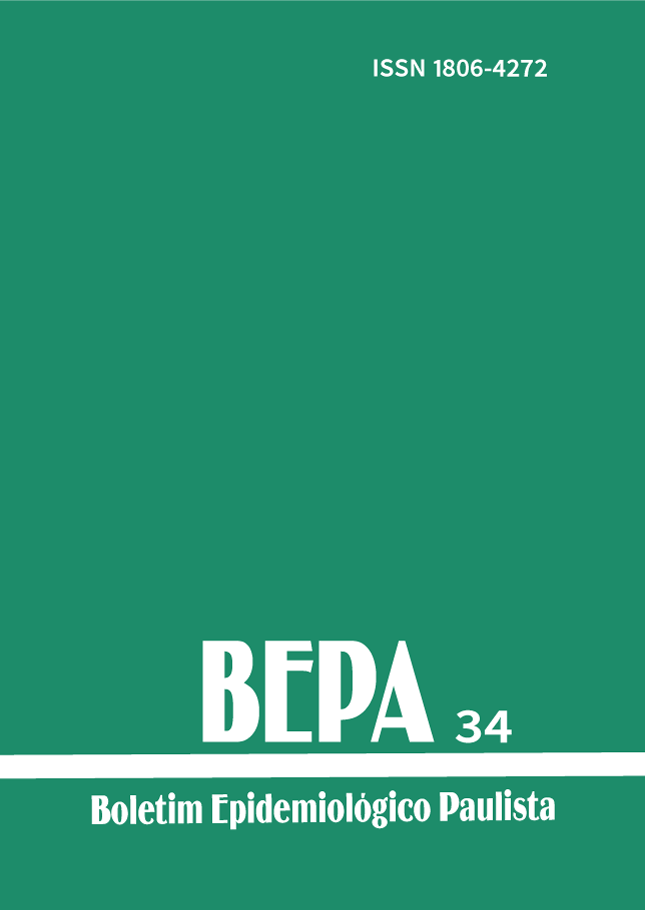Abstract
To identify prevalence, associated factors and risk factors for urinary incontinence (UI) as well as impact on quality of life (QoL) in women seeking for cancer prevention screening. Method of choice was cross sectional analysis of 646 women who sought cancer prevention screening in Oncologic Hospital in October/2005. We assessed the prevalence, severity and impact of UI on QoL by means of International Consultation on Incontinence Questionnaire (ICIQ-SF). Risk factors were identified by univariate and multivariate logistic regression models. Mean age was 37,7 years. General UI prevalence rate reached 34,8%. The ICIQ Escore from the whole population sample was 3,1 increasing to 8,9 in the incontinent group. Age, literacy, diabetes e hypertension were associated to UI and were considered and identified as risk factor along with frequency pregnancies. Family wages per month (< 4), neurological diseases, parity and its mode (vaginal delivery or cesarean section) were not considered risk factors in this study. Elderly women (older than 60 years) had three times the odds of UI compared to those younger than 40 years. Women with hypertension had 1.7 the odds of UI compared to those with no hypertension. UI is highly prevalent among this sample of population of our area. Furthermore, UI caused moderate impairment on QoL of women who sought cancer screening. UI should be considered a major public health problem in the studied area. Risk factor identified were age, literacy, diabetes, hypertension and frequency of pregnancy. Overall, elderly women with hypertension are at a high risk of UI.
References
Katz S. The Science of Quality of Life.: J Chron Dis 1987; 40(6): 459-63.
Abrams P, Cardozo L, Fall M, Griffiths D, Rosier P, Ulmsten U et al: The Standardization of Terminology of Lower Urinary Tract Function: Report from the Standardization Sub-Committee of the International Continence Society. Neurourol Urodyn 2002, 21: 167-178.
Hunskaar S, Arnold, EP, Burgio K, Diokno, AC, Herzog AR, Mallett, VT: Epidemiology and Natural History of Urinary Incontinence. Int Urogynecol J 2000; 11:301-19.
Guarisi T, Pinto Neto AP, Osis MJ, Pedro AO, Paiva LHC, Faúndes A: Urinary incontinence among climateric Brazilian women: household survey: Journal of Public Health 2001; 35(5): 428-35
Tamanini JTN, Dambros M, D'Ancona CA, Palma PC, Rodrigues Netto N Jr. Responsiveness to the Portuguese version of the International Consultation on Incontinence Questionnaire-Short Form (ICIQ-SF) after stress urinary incontinence surgery. Int Braz J Urol. 2005; 31(5): 482-9
Tamanini JTN, Dambros M, D’Ancona CAL, Palma, PCR et al.: Validation of the “International Consultation on Incontinence Questionnaire – Short Form” (ICIQ-SF) for portuguese. Journal of Public Health 2004; 38(3): 438-44.
Mouton CP, Espino DV: Health screening in older women. Am Fam Physician 1999; 59(7): 1835- 42.
Palacios S, Sanchez Borrego R, Forteza A. The importance of preventive health care in postmenopausal women. Maturitas 2005; 52(Suppl1): S53-60.
Kocak I, Okyay P, Dundar M, Erol H, Beser E. Female urinary incontinence in the West of Turkey: Prevalence, Risk Factors and Impact on Quality of Life: Eur Urol 2005; 48: 634-41.
Del Priore G, Taylor SY, Esdaile BA, Masch R, Martas Y, Wirth J. Urinary incontinence in gynecological oncology patients: Int J Gynecol Cancer 2005; 15: 911-4.
Hägglund D, Walker-Engström ML, Larsson G, Leppert J. Reasons why women with long-term urinary incontinence do not seek professional help: a cross-sectional population-based cohort study: Int Uroginecol J 2003; 14: 296-304.
Althof S, Dean J, Fitzpatrick J, Heaton J, Raymond R. Could urological questionnaires completely replace physiological testing? BJU Int 2005; 96(9): 1210-12.
Riccetto CLZ, Palma P, Herrmann V, Dambros M, Thiel M, Tamanini JTN, Netto NRJr.: Is there correlation between urodynamic findings and International Consultation on Incontinence Questionnaire - Short Form (ICIQ-SF) Score? J Urol 2005; 173(Suppl 4):357.
Hajebrahimi S, Corcos J, Lemieux CM. International Consultation on Incontinence Questionnaire Short Form. Comparison of physician versus patient completion and immediate and delayed selfadministration. Urology 2004; 63: 1076-8.
Danforth KN, Townsend MK, Lifford K, Curhan GC, Resnick NM, Grodstein F. Risk Factors for Urinary Incontinence among Middle-aged Women. Am J Obstet Gynecol 2006; 194(2): 339-345.
Manonai J, Poowapirom A, Kittipiboon S, Patrachai S, Udomsubpayakul U, Chittacharoen A. Female urinary incontinence: a cross-sectional study form a Thai rural area. Int Urogynecol J Pelvic Floor Dysfunct 2005; 24:1-5.
Newman DK, Continence Promotion: Prevention, Education and Organization. In: Abrams P, Cardozo L, Khoury S, Wein Incontinence (Vol 1 – Diagnosis) London, 2005; p 37-66.
Brown JS Urinary incontinence: an important and underrecognized complication of Type 2 Diabetes Mellitus. J Am Geriatr Soc. 2005; 53(11): 2028-9.
Maddens M, Imam K, Ashkar A. Hypertension in the elderly. Prim Care 2005; 32(3): 723-53.

This work is licensed under a Creative Commons Attribution 4.0 International License.
Copyright (c) 2006 José Tadeu Tamanini, Mirce Milhomem da Mota Tamanini, Lenira Maria Queiroz Mauad, Ana Marta Bonilha do Amaral Prado Auler
